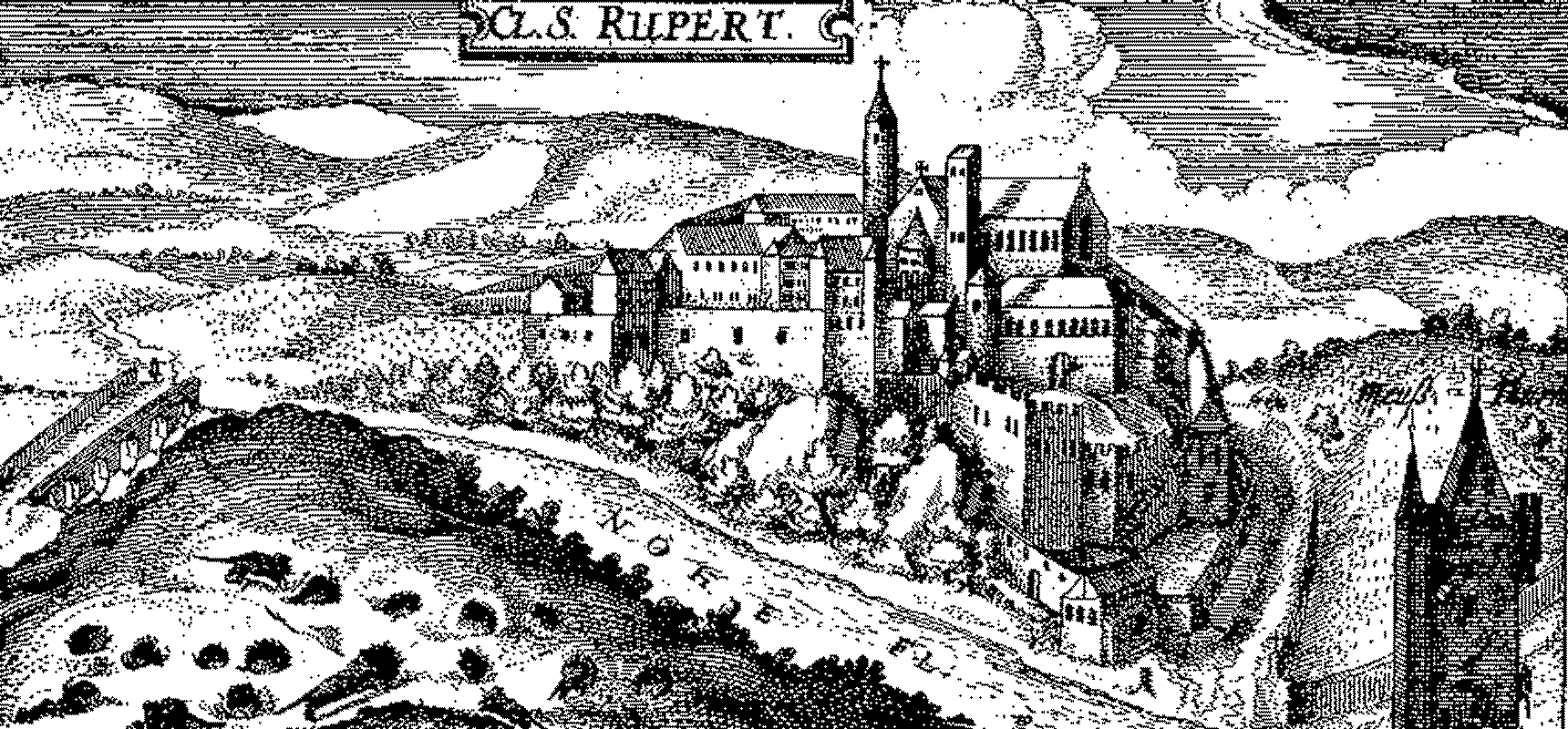
Hildegard of bingen - biography
Hildegard of Bingen, sometimes called "the Sybil of the Rhine", was born in 1098 in Bermersheim, Germany. She was the tenth child of Hildebert von Bermersheim and his wife Machtild, who dedicated her to the religious life at a very young age. She entered a monastery at the age of eight, and was known to have the gift of clairvoyance and prophesy even as a child.
In 1136, Hildegard was chosen to be the magistra of Disibodenberg monastery. The community of which she was the head eventually moved to a new monastery, the Rupertsberg at Bingen on the Rhine river.
Image: Rupertsberg Convent during the time of the 30 years war)

Hildegard experience a series of "revelations", or visions, in 1141, in which she was commanded to "write what you see and hear!". This resulted in her most famous work, Scivias, in 1150. Hildegard suffered from an unnamed illness during her life, the symptoms of which strongly resemble that of migraine headaches. Many scholars believe this may have cause her visions. But Hildegard is known for much more than her visions. She was also a musical composer, a theologian, a healer, and an artist. She was very influential during her lifetime, counseling many powerful men, including popes and kings.
Hildegard died on September 17, 1179 in Bingen and was interred in Eibingen Parish Church. She was one of the first people for which the official Roman Catholic canonization process was used. Unfortunately, this process was not completed with Hildegard, and she remains "beatified" to this day. However, Hildegard was so popular that she was referred to as "Saint" Hildegard almost immediately following her death, a tradition which remains to this day. Her feast day is celebrated annually on the anniversary of her death.
(Image: Reliquary of Saint Hildegard, Housed in Eibingen Parish Church, Germany)
